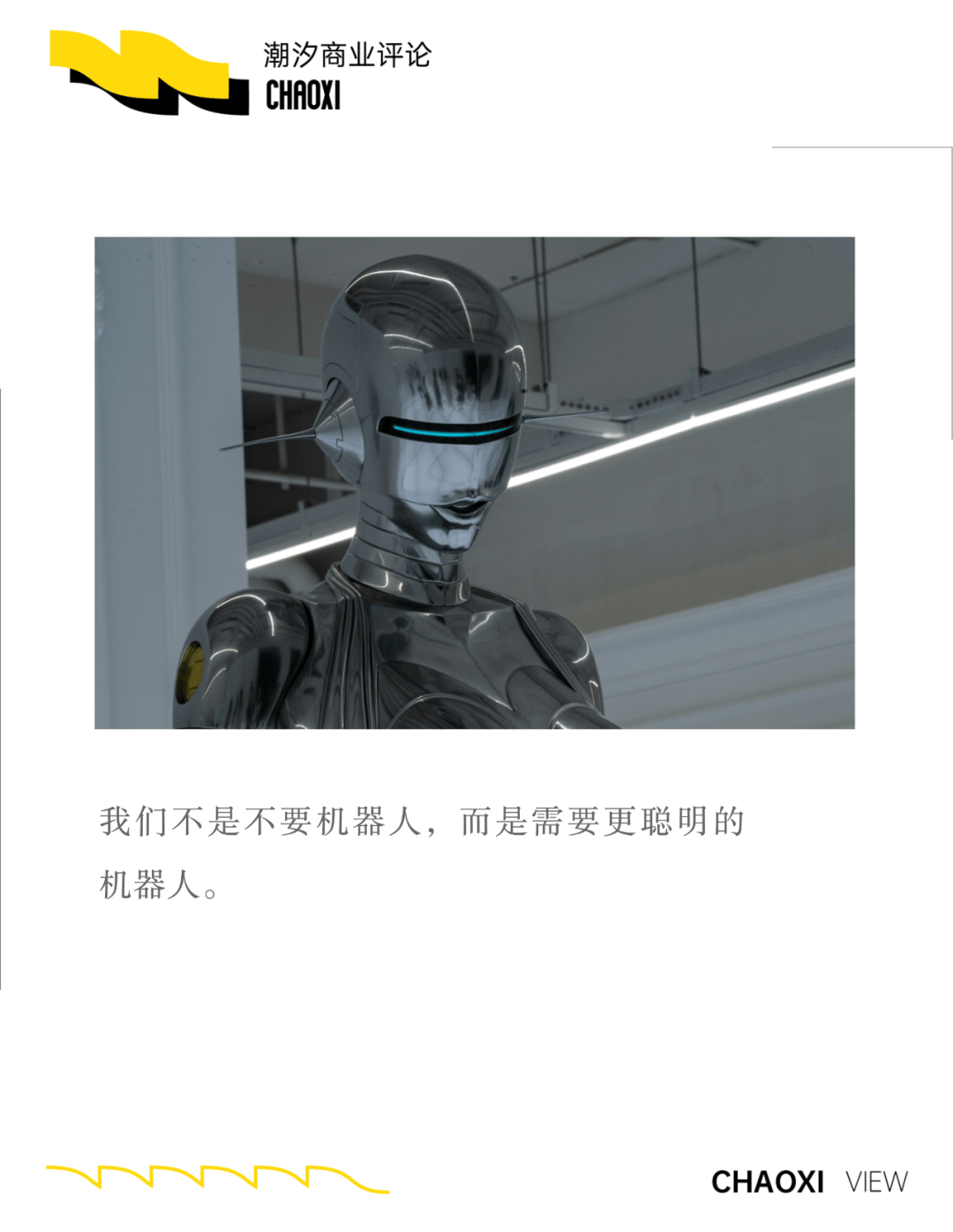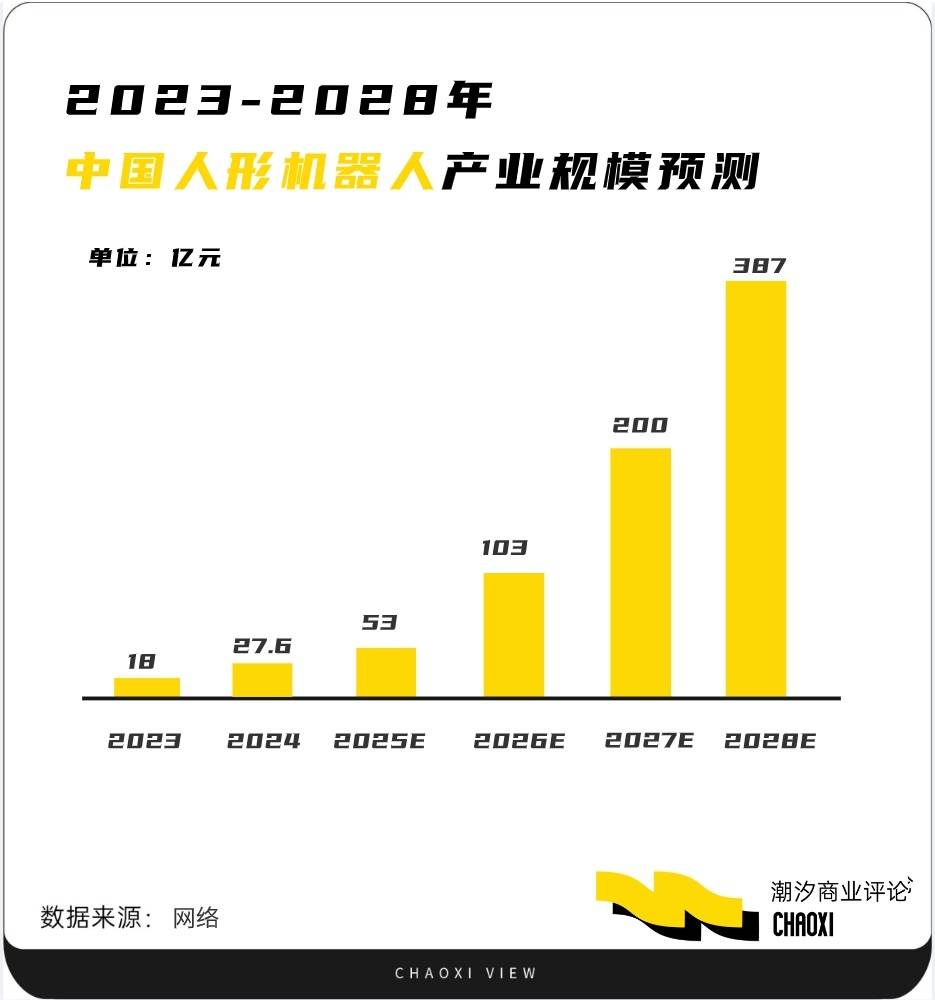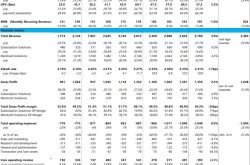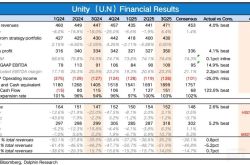Humanoid Robots: A Breakthrough in 2025 - Evolution, Symbiosis, and Commercialization
![]() 07/11 2025
07/11 2025
![]() 535
535

Author | Donald
Editor | Ray
Remember David, the android from the movie "Prometheus," with his piercing blue eyes gazing at Dr. Elizabeth Shaw? After exploring the engineers' homeworld alongside his master, this loyal and brave android revealed his own intelligent brain and thoughts...
While the origins of life and religious philosophy serve as mere plot devices in the film, the interaction between humans and robots is very much a reality.
"3, 2, 1..."
As the countdown begins, a robotic arm swiftly locates a rope device with a radius of about 4mm, precisely assisting humans in their task.
This scene unfolded during the 618 shopping festival in a Beijing mall. Before the promotional package ribbons had even settled, 26 humanoid robots from 23 brands stole the spotlight. Some swayed their round heads from side to side, like bears just waking up; others extended their flexible mechanical arms, clumsily handing out balloons to passing children; still others blinked their glowing "eyelashes," circling around and "greeting" the crowd.
Even the elderly, busy comparing prices, couldn't help but pause to prod the belly of the robot that said "Welcome." These "new species" emerging from the screen are endearing humans with their cuteness.
During this year's Spring Festival Gala, Unitree Technology's H1 robot danced the yangko dance, bringing these somewhat clumsy yet slightly clever "big shots" into the view of hundreds of millions of families. As autonomous robots now begin to push the boundaries of commercialization, what kind of contradictory tools are they, exactly?
01 Evolution: From TV to Reality
Looking back, the deep integration of humanoid robots into technology and application scenarios has not been an overnight process. The android David from the sci-fi classic "Alien: Covenant" several years ago was a robot that transitioned from the laboratory to reality. In the movie, David was a professional scientist and an angel protecting the protagonist, occasionally harboring his own "little thoughts and secrets."
Therefore, it's crucial to clarify a product concept here: today's humanoid robots are a far cry from their predecessors.
Early public perceptions of robots largely revolved around simple "intelligent sweeping robots," "food delivery robots," or "guiding robots" in bank lobbies.
But AI has given birth to a new form of embodied intelligence tools. Through the seamless integration of algorithms, machine learning, and humanoid skeletal mechanical equipment, intelligent humanoid robots that mimic human form and movement, perceive the environment, and possess a certain degree of autonomous decision-making and interaction have emerged.
In layman's terms, they've become smarter, and as a result, they've begun to take on "hard" and "tiring" tasks everywhere.
From an industry perspective, the birth and commercialization of this new species bear the profound imprints of the times and industrial backgrounds. Driving this wave are the multifaceted effects of policy, capital, and industrial chain synergy.
Especially in 2023, after the Ministry of Industry and Information Technology's "Guidance on the Innovative Development of Humanoid Robots" clearly set the goal of achieving mass production by 2025, local governments swiftly followed suit. For instance, Beijing, Shenzhen, and other places have established special funds, with Shenzhen ambitiously aiming to cultivate "20 enterprises with revenue exceeding 1 billion yuan and 50 application scenarios worth 1 billion yuan."
Driven by policies, the cost of humanoid robots has plummeted. Currently, the localization rate of core components has surpassed 65%, and the cost of the entire machine has dropped by 30% within three years. A prime example is Unitree Technology's high-end model H1, which costs 650,000 yuan, while its more widely marketed G1 model has seen its price drop to 99,000 yuan, selling out immediately upon launch.
Subsequently, the industrial chain is also rapidly maturing. According to Morgan Stanley's previously released list of the top 100 global humanoid robot industrial chain companies, Chinese enterprises occupy a staggering 37 spots. Even more than half of the components for Tesla's humanoid robot Optimus come from Chinese suppliers.
On the flip side of accelerated commercialization, this new species is quietly infiltrating every corner of human life and work.
Nancy, who has studied machine learning for many years, has witnessed this new revolution firsthand.
"A few years ago, I didn't realize that robots would integrate so seamlessly into life, learning, and work as they do now. It wasn't until I saw robots with the same body and appearance as humans in movies appearing in front of me, or even racing humans in marathons."
In her view, the arrival of humanoid robots is inevitable. Looking deeper, this new species has already permeated all aspects of human social life.
In the industrial field, tasks with high standardization and strong repetitiveness often become their "first stop." Among them, it's not uncommon to see the figure of UBTECH's Walker S1 transporting materials in BYD factories. Zhiyuan Robotics has begun to infiltrate 3C electronics production lines, testing more delicate assembly work and silently learning the 1001st action data like an "apprentice," with the goal of steadily assembling a component. Unitree Technology's nuclear power inspection robot reduces the originally required 2-hour manual inspection to just 10 minutes.
Of course, robots are also ubiquitous in the field of household services. The "Xiangjiang No. 1" developed in Hunan can play simple melodies, help the elderly stand up, and conduct basic health monitoring. Within just three months, Leju's "Kuafu" robot increased its freedom of movement from 28+ to 40+, accurately executing daily commands such as watering plants and hanging laundry, exuding a strong sense of life...
This symbiosis with a new species has long surpassed the superficial logic of industrial production iteration. It's not only a life partner that permeates daily life but also carries the spiritual connection of emotional comfort—reconstructing the paradigm of human-technology interaction on the dual dimensions of efficiency and warmth.
02 Coexistence: From Strangers to Acceptance
Academic research points out that, "Compared to the cold, mechanized impressions of the past, AI based on large language models now possesses more anthropomorphic characteristics. Their responses can convey emotions, bringing warmth and humanized interaction experiences."
It's not difficult to see that the bright side exhibited by humanoid robots is exhilarating. Therefore, the industry's pursuit of efficiency in humanoid robots has reached its peak. In 2024 alone, the financing amount around embodied intelligence (Embodied AI) exceeded 10 billion yuan, with giants like Huawei and BYD entering the field. Honor announced a robot at the end of May with a maximum running speed of 4m/s.
The entry of new players has accelerated the growth and development of the industry scale. According to the "2025-2030 China Humanoid Robot Industry Analysis and Development Prospect Research and Forecast Report" released by the China Chamber of Commerce Industry Research Institute, the scale of China's humanoid robot industry in 2024 was approximately 2.76 billion yuan, an increase of 53.33% over the previous year. It is predicted that the scale of China's humanoid robot industry will reach 5.3 billion yuan in 2025 and 38.7 billion yuan in 2028.

Expanding scale means accelerated application. The application range of humanoid robots in life and work mentioned above will further expand, which in turn will further change the public's traditional perception of AI. But it also raises an important question: If AI has different personality traits like humans, how will people respond and accept this personality-laden AI?
There are always two sides to a coin. While humanoid robots bring hope, they also cast a long shadow. The most direct question is whether they can truly "coexist in the same room"?
Some scholars have studied and pointed out that when people interact with AI with a relatively large psychological distance, they often feel distrust or even rejection. This phenomenon was particularly evident when AI technology first entered the market, as many users were still "strangers" to AI and had difficulty trusting its decisions and actions.
For example, robot tools entering homes to serve the elderly or infants—can they truly achieve high efficiency, high emotional intelligence, high care, and even sufficient safety to meet people's needs? There is actually no answer yet.
The challenge this poses to the industrial chain is that when humanoid robots integrated with AI technology become more anthropomorphic in their interactions, the psychological distance between humans and AI will shorten, leading to greater trust and intimacy towards AI. This shortened psychological distance will further enhance users' acceptance of AI systems, encouraging them to continue using these technologies in the future.
At the societal level, a Goldman Sachs report has warned that by 2035, humanoid robots may replace up to 250 million jobs globally, with manufacturing workers bearing the brunt. Although companies often emphasize that "workers will shift to higher-value robot scheduling and maintenance positions," the pain during the transition and the unemployment risks caused by skills mismatches are unavoidable realities. As a result, in the eyes of some industry insiders, "the tool itself may be neutral, but the system that uses it inevitably has a stance" has become a frequent refrain.
Admittedly, the development of humanoid robots is unstoppable. However, what we should think more about is how to coexist with them, but there are not many answers to this question today. However, one thing is certain: it needs to be more like a "human"—a realistic intelligent agent that can self-correct and respond flexibly.
03 Commercialization: From 0 to 10,000
If humanoid robots can provide emotional value, they will likely be sought after like Pop Mart, which means they are beginning to understand our little thoughts. In the process of commercialization, the effective integration between humans and humanoid robots will be a continuous event in the future. What needs to be addressed now is the challenge faced by the industry regarding large-scale mass production.
Don't we really need these humanoid robots that can generate and consume energy? In other words, market enthusiasm is like a tide, with rises and falls. Some robotic companies that initially attracted attention with cool demos are now facing the cold reality.
For example, it is estimated that national humanoid robot production will exceed 10,000 units in 2025, but the well-known investor Zhu Xiaohu of Jinsha River Ventures promptly poured cold water: "Being able to flip somersaults doesn't mean making money!" Some early projects have encountered the embarrassment of capital withdrawal due to vague commercialization paths.
This situation is even more pronounced in terms of scenario mismatch. For instance, a startup ambitiously launched a warehouse handling robot, but due to a fault rate as high as 30% during actual operation, it ultimately faced large-scale returns from customers.
At the consumer level, "unable to rent out" has become an unspoken injury in the industry. Facing prices often reaching the 100,000 yuan level, users' complaints are straightforward and realistic: "Spending 100,000 yuan on a machine that can only fold blankets? It's more practical to hire a nanny!" This cold water reminds practitioners that there is still a long way to go between flashy demos and commercial products that truly meet rigid demands and create value.
Humanoid robots are inherently pursued by capital waves, but the core key to breaking the deadlock actually lies in technological innovation. Wang Xingxing, the founder of Unitree Technology, believes that "cost reduction relies on design, and mass production requires dedicated large models" has become an industry consensus—significantly reducing reliance on expensive general large models and ultra-high computing power through algorithm optimization, structural innovation, and the development of dedicated lightweight robot large models, and compressing the failure rate to below 1% is the only way to achieve large-scale commercial use.
The answer is already clear: we don't reject robots, but we need smarter robots. Only when the performance threshold is crossed will truly intelligent robots emerge.
The next step is for embodied intelligence to achieve large-scale application in the industrial field and form industrial value.
This is akin to the new energy vehicle industry. When the gross profit margin per vehicle reaches a reasonable and healthy level, the enterprise can be considered to have passed the life-or-death stage. Moreover, it still maintains advantages in technological innovation, functional experience, and other aspects. In the long run, this is also a direction that humanoid robot manufacturers need to achieve. The ending of the humanoid robot story will be written jointly by the industry and the general public.
In the world's first half marathon for humanoid robots in April this year, after the first human participant crossed the finish line in 1 hour and 38 minutes, Tiangong 1.2max became the first robot in history to cross the marathon finish line.
"I happened to be there that day. The robots were so cute. Although there were lots of issues, they all had a process of progress and growth. After all, from a certain perspective, this is part of the future," Vicky said thoughtfully.
Perhaps when we look back at this race many years later, it may be endowed with new meaning, shining with the light of the future.
You see, that's how business works.








